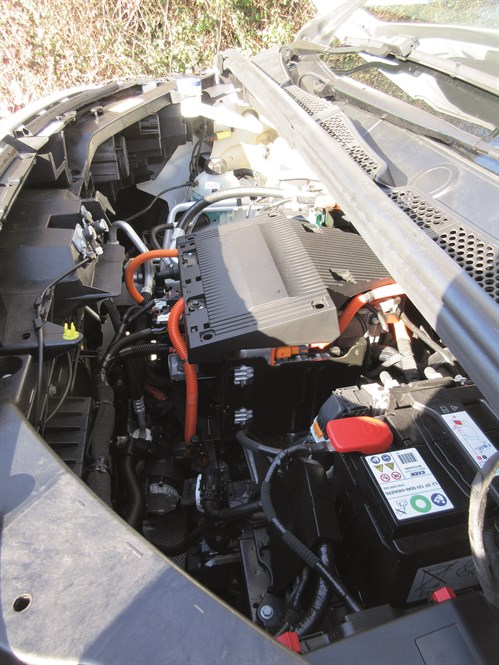- Renault gives UK debut to Master E-Tech at CV Show
- Isuzu D-Max long-term test – Latest Report
- Isuzu D-Max V-Cross Steel Edition revealed
- IVOTY Report: Stellantis explores the hydrogen proposition
- New Maxus EVs include eDeliver 5 van
- Used LCV values reach six-month high
- ADVERTISEMENT FEATURE: IVECO Daily Mission Awards 2024 Q2 Round-up: Grounds Maintenance & Forestry
- Stellantis Pro One electric vans review
- Mitie adds 5,000th EV to fleet
- Record number of CVs now on UK roads, SMMT reports
The What Van? Road Test: Citroen e-Berlingo (2021)
Date: Monday, June 20, 2022

Powertrain
Power comes courtesy of a 50kWh lithium-ion battery recharged through a combined CCS/Type 2 port and our e-Berlingo was equipped with a 7.4kW on-board charger. A 6m-long Mode 3 charging cable is provided with Type 2 connectors for charging from wall boxes and public charging points.
The van’s 100kW (136hp) electric motor generates 260Nm of torque. With an electric motor it is, of course, available immediately.
Driving
No need to worry about changing gear once the electronic parking brake
is released.
The motor drives the front wheels through what is in effect a step-less single-speed automatic transmission.
A switch gives you the simple choice of reverse, neutral or drive; so take your pick.
A button next to it lets you increase the level of regeneration so you pump some charge back into the battery every time you lift your foot off the accelerator pedal and the van decelerates.
It slows the van noticeably without the need to resort to the brake pedal – good news for brake component life – in effect functioning as a retarder.
While it is not as nimble through bends as its short-wheelbase counterpart, the long-wheelbase e-Berlingo rides better and is much less of a puddle-jumper.
Because electric motors are far quieter than diesels, all the other sources of noise on a van – squeaks from the suspension, rattles from the base of the bulkhead – can become more obvious; and irritating.
Not an issue with e-Berlingo A good standard of build quality meant there was not a groan or creak to be heard.
As a consequence we were able to sit back and enjoy the van’s performance.
When we flicked a switch that gave us the Power option the result was a firm, smooth push between the shoulder blades as e-Berlingo surged ahead.
On the negative side your range goes down at the same time. A dashboard display tells you how much is left.
Choose the Eco setting instead and your range improves, but the van’s ability to accelerate briskly and maintain motorway speeds is alas throttled. We had expected the cab’s heating system to be turned down at the same time to reduce the power drain, but happily this did not happen.
Having sampled both options we stuck with Normal for most of our test; the default setting and a satisfactory compromise.
Citroën cites a 171-mile range between recharges according to WLTP (Worldwide Harmonised Light Vehicle Test Procedure) figures. We got close to 140 miles before we felt the need to find a charging point.
View The WhatVan Digital Edition


